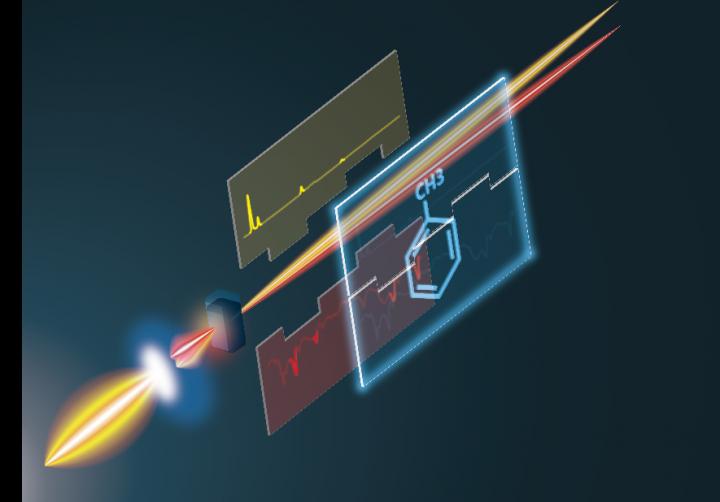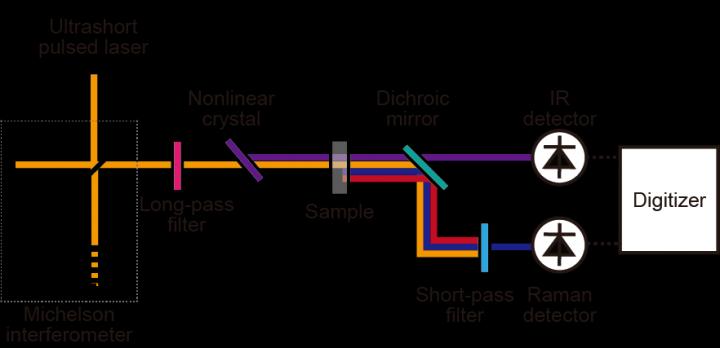Photonics HandbookTech Pulse
Spectroscopy Technique Widens Spectra for Measuring Molecular Structure
Researchers at the University of Tokyo have combined two current spectroscopy techniques — infrared (IR) absorption and Raman scattering spectrometry — to create complementary vibrational spectroscopy. The new technique employs IR absorption and Raman scattering spectroscopy simultaneously to allow researchers to measure the complete broadband vibrational spectra in the molecular fingerprint region with a single instrument. Advancements in ultrashort pulsed laser technology have made complementary vibrational spectroscopy possible, the Tokyo team said.
The system is based on dual-modal Fourier-transform spectroscopy enabled by the use of nonlinear optical effects. Inside the complementary vibrational spectrometer, a titanium-sapphire laser sends pulses of near-infrared (NIR) light with a width of 10 femtoseconds (fs) toward a chemical sample. Before hitting the sample, the light is focused onto a crystal of gallium selenide. The crystal generates mid-infrared (MIR) light pulses. The NIR and MIR light pulses are focused onto the sample. The absorbed and scattered lightwaves are detected by photodetectors and converted simultaneously into Raman and IR spectra.

Complementary vibrational spectroscopy relies on improvements in ultrashort pulsed laser technology. Researchers at the University of Tokyo hope to use this new technique to see molecules change shape in real time without invasive techniques. Courtesy of Takuro Ideguchi, CC BY-ND-4.0.
While Raman spectroscopy can detect wavelengths from 0.4 to 1 μm and IR spectroscopy can detect wavelengths from 2.5 to 25 μm, complementary vibrational spectroscopy can detect lightwaves around the visible to the NIR and MIR spectra. By combining the more limited spectra of Raman and IR spectroscopy, the new technique could give researchers different, complementary information about molecular vibrations.
So far, the researchers have tested their technique on samples of pure chemicals commonly found in science labs. In experiments, the researchers demonstrated rapid, broadband, high-spectral resolution measurements of complementary spectra of the samples, for precise, accurate molecular analysis.

Complementary vibrational spectroscopy is based on a dual-modal Fourier-transform spectrometer with an ultrashort pulsed laser. The Raman measurement is made by Fourier-transform coherent Raman scattering spectroscopy. The IR measurement is made by Fourier-transform infrared absorption spectroscopy with IR light generated at a nonlinear crystal. Courtesy of Takuro Ideguchi.
Complementary vibrational spectroscopy could be used in medicine, pharma, chemistry, and other fields to study molecular structures with increased detail and specificity. The researchers hope that the technique will one day be used to understand how molecules change shape in real time.
“Especially for biology, we use the term ‘label-free’ for molecular vibrational spectroscopy because it is noninvasive and we can identify molecules without attaching artificial fluorescent tags,” professor Takuro Ideguchi said. “We believe that complementary vibrational spectroscopy can be a unique and useful technique for molecular measurements.”
The research was published in Nature Communications (https://doi.org/10.1038/s41467-019-12442-9).
Published: September 2019